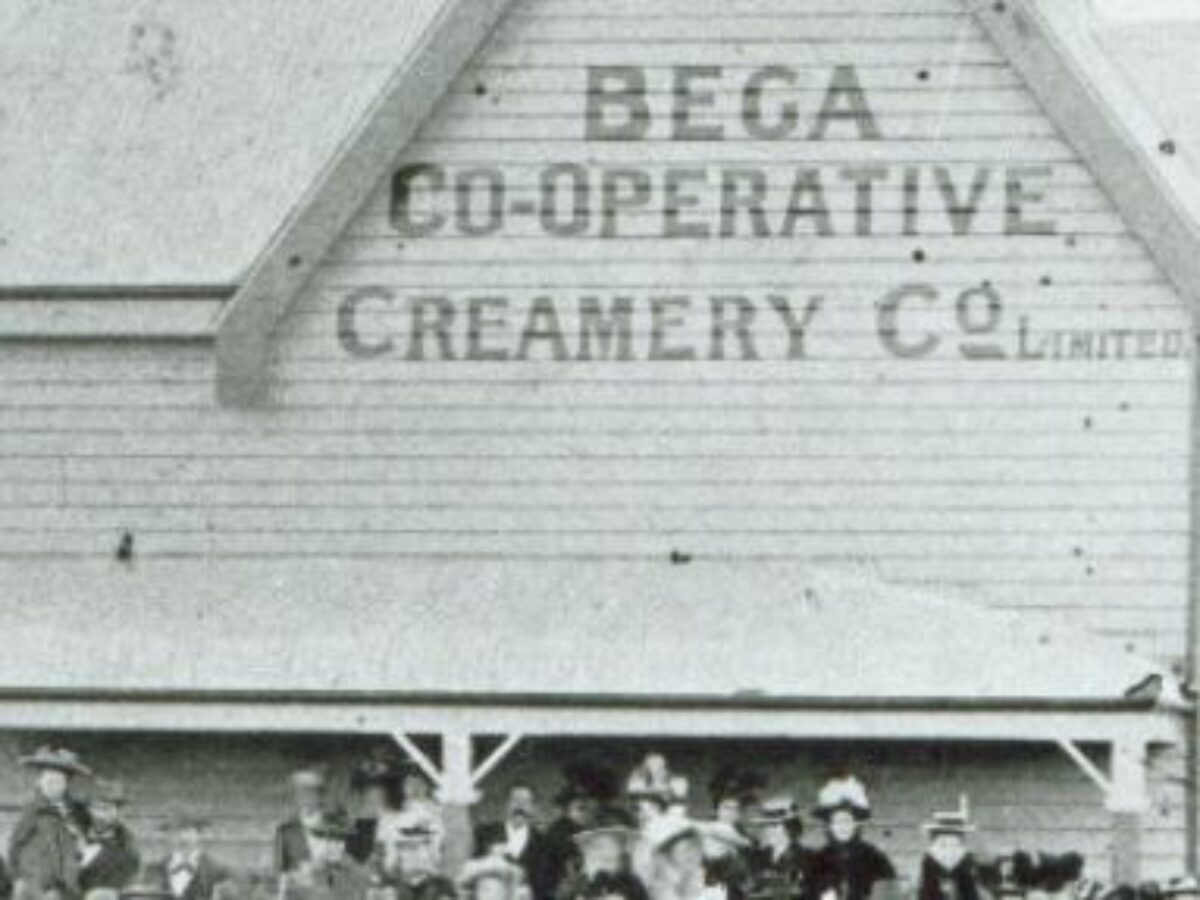The parlous state of Australia’s food industry – by Allen Roberts

We all need to eat, but we seem to take for granted our access to processed and fresh food and groceries, and even more so to Australia’s parlous food industry value chain. By Allen Roberts
To consider the ‘food industry’ as one entity ignores the entirely different strategic drivers of the three main components: raw material production or ‘farming’, manufacturing, and retail.
In addition to food products in the FMCG basket, you have many non-food grocery items from cleaning and homewares to health, beauty, and personal and pet care categories. Go into any supermarket, and these non-food categories take up somewhere around 20 percent of shelf space.
Farming
The ‘family farm’ used to dominate the farming sector, but that is diminishing as scale enabled by capital takes the place of family intergenerational ownership.
Costs come down with corporate ownership, but you are most likely to see agricultural monocultures emerge, as short-term financial returns creep up the priority list.
The register of foreign ownership, flawed as it is, records in the latest report of June 2021, that 14.1 percent of agricultural land is in foreign hands, up from 10.9 percent the previous year.
The National Farmers Federation estimates that 99 percent of farm enterprises are owned by Australians – clearly the big are getting bigger at the expense of the small.
The infrastructure necessary for the management of farm production requires substantial investment, the rail networks have broken down, and the roads are a mess. This is a long-term problem, and the logistic costs of farming will increase faster than the inflation rate.
Manufacturing
A report from the AFGC concludes that profitability is declining, due largely to the concentration of retail, and that imports will gain ground as a result.
Currently the food & beverage manufacturing industry employs 276,000 people, 40 percent of them in regional areas, and has an output value of $127 billion, 32 percent of total Australian manufacturing output.
In other words, it is big and diverse both geographically and demographically, and therefore should hold a significant place in the thinking about how we educate and groom future leaders.
The gross figures for the industry indicate that there is almost 30 percent of production value exported. Problem is that the vast majority of this is raw or minimally processed meat and grain, employing few people, anywhere in their supply chains, and competing in commodity markets.
Of The eight directors of the Australian Food and Grocery Council, the industry’s ‘representative’ body, one is the CEO of an Australian beverage company, the other nine are all the chief executives of multinationals.
This is not a bad thing beyond the obvious fact that it perpetuates the lobbying and resulting policy positions of government in favour of MNC’s vs the locally owned industry.
As a young bloke coming into FMCG in the late 70’s after a few years as a nomad, there were many businesses of a whole range of sizes and types to work for. Over time, the number and diversity has been radically reduced.
Significant industries like dairy are now almost complete branch offices of multinationals. The exception is produce, where there are still many farming suppliers, although there are now a few very big consolidators, like Costas, who dominate the supply chain into retail.
There are no proprietary produce brands in retail, beyond a couple of minor organic brands – retailers have ensured that they absorb all the proprietary margin in produce.
If there is a light in the tunnel starting to be seen evolving as a result of the disruption of supply chains, and the low profitability of FMCG manufacturing, it may be Bega.
Bega Cheese, which was rescued from the clutches of the receiver by now foreign owned Dairy Farmers Ltd way back in the early 1990s, has been able to expand by buying the Port Melbourne site of Kraft, as it was taken over by Mondelez, and ending up being able to buy the Vegemite brand, and more recently the rebranded peanut butter business.
Perhaps this is the beginning of a resurgence?
Retail
Food and grocery market size and share in Australia is debateable depending on what is included.
By most analyses, Woolworths has around 37 percent share, Coles 28 percent, and Aldi, now the real third force 11 percent, and the wholesaler supplied groups around seven percent.
The remaining 17 percent is made up of a patchwork of fresh and farmers markets, direct from farm delivery, small independent retailers, and convenience outlets.
In addition, there is the huge food service market, varying from the local owner operated restaurant and takeaway, to fast food chains and five-star dining. This sector consumes a large amount of product and employs thousands of people.
The power wielded by this bloc of 76 percent of food and grocery sales is immense. As they have scaled out of the ruck that was the retail playing field in the 70’s and 80’s, taking over or leaving to the receiver less robust competitors.
They have squeezed manufacturer margins by a range of strategic weapons that are a classic case study of Michael Porters 5 forces.
In response, manufacturers have similarly scaled by using regional manufacturing hubs, most often in Asia.
The impact on domestically owned manufacturing has been dramatic, accelerated during the period where the $A was above parity with the $US, which encouraged wider adoption of house brands manufactured overseas, wiping out much of what remained of locally owned manufacturing.
With a couple of notable exceptions, (San Remo, and now Bega, and Sanitarium who do not pay tax, for example) Australian owned food manufacturing is down to sub scale cottage manufacturers relying on the fragmented but still difficult 24 percent not controlled by the three retail gorillas.
It is fair to acknowledge the strategic failure of local management, while throwing rocks at the retailers.
The major FMCG brands owned by domestic businesses, built up over extended periods, failed to recognise the long-term strategic importance of maintaining their brands.
Instead, they surrendered to the tactical demands of retailers for short term promotional dollars that assisted retail margins while keeping prices low.
Short term, consumers may have benefitted from the price competition while having significantly less choice.
Long term, they face the impact of an economy that has only a tiny proportion of its biggest manufacturing industry being able to make strategic choices driven by domestic priorities.
A few thoughts about the future
Technology cannot do anything but increasingly impose itself on the industry, in all its components.
Australia is already a world leader in the development and deployment of agricultural technology.
Failure to accelerate the rate of innovation will find Australian agriculture losing the current productivity edge we have, as while we are really good farmers, the soils of the continent are old and poor, subject to significant climatic risks.
Therefore to keep our position, we must continue to be smarter.
Innovations in retail are happening elsewhere. ‘Amazon Go’ type technology will transform the shopping experience, and home delivery will not be going away.
Meanwhile Australian retailers are wedded to optimising the business model that has made them successful in the past. This will open up opportunities for alternative retail formats and processes.
Retailers are good at retailing, but have been proven to be lousy at product innovation.
In the past, product and category innovation has come from businesses tapped into the consumer psyche.
Unfortunately, those businesses are virtually gone, so where is the next innovation going to spring form? Certainly not from the office of a buyer whose KPI’s are all about margin today
The logistic infrastructure so vital in a country as large and diverse as Australia is in poor shape.
Rail networks are broken, roads are going the same way, a trend recently accelerated by flooding, and you cannot get drivers of heavy and long-haul equipment easily.
The median age of all transport drivers is approaching 50, and long-haul semi drivers is now 55, and they are not being replaced. When considering specialised driving jobs like picking up cattle from farms, the situation is already dire.
In summary, the Australian food industry is faced with a series of significant challenges that have evolved over a long period.
They will not be effectively addressed by industry or public authorities that think in terms of only a four or five year strategic horizon.
Allen Roberts is principal of StrategyAudit, a consultancy that helps companies identify and remove the barriers to high performance.
Picture: Bega Group – hope for the future?
@aumanufacturing Sections
Analysis and Commentary Awards Defence Manufacturing News Podcast Technology Videos










